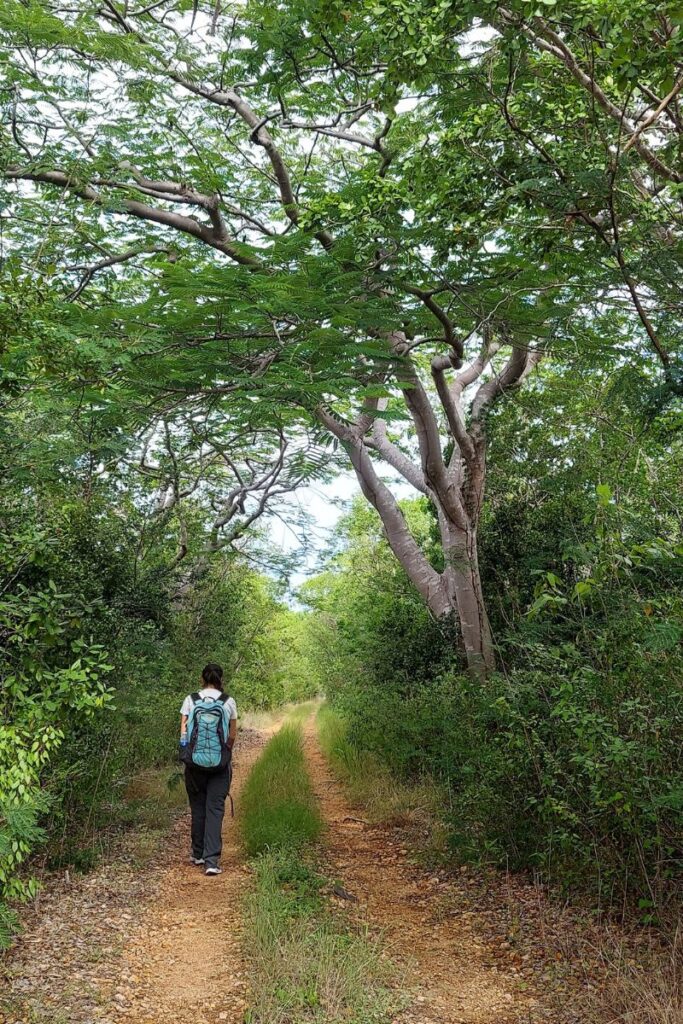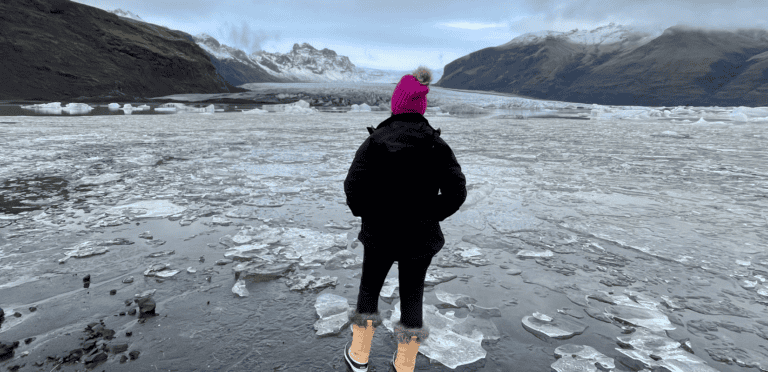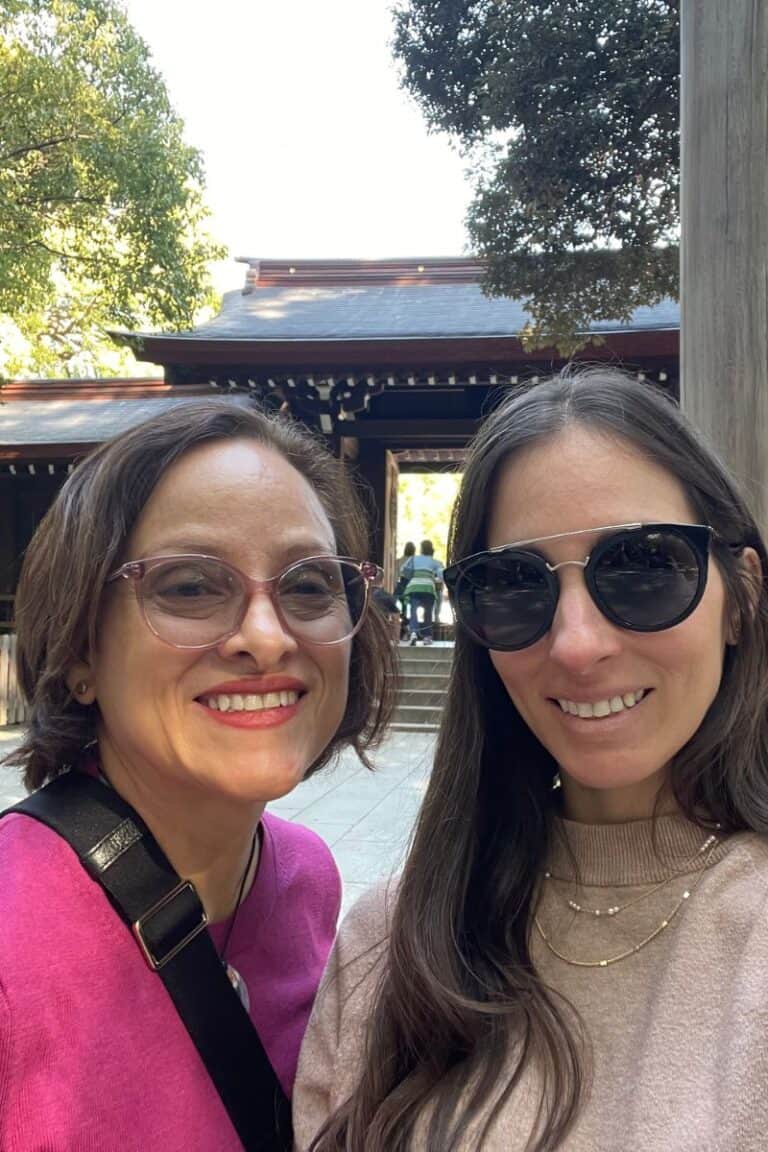How to Plan a Trip for Beginners: A Step-by-Step Guide
Our step-by-step guide on how to plan a trip for beginners covers everything from choosing a destination to booking flights, hotels, and activities.
Trust us, we know that planning a trip from scratch can feel overwhelming, especially if you’re new to it.

With so many things to consider—where to go, how much to spend, what to book first—it’s easy to get lost in the details.
But don’t worry! This guide will take you through how to plan a trip in a simple, stress-free way.
In this blog post, we’ll walk you through the exact steps we use to plan our trips. Along with practical tips to make your trip smooth and enjoyable.
Step 1: Choose What Kind of Trip You Want
Before deciding on the destination, take a moment to decide what kind of trip you want to take.
Are you traveling with family, exploring with friends, or going on a solo trip?
The type of trip you choose will shape every other part of your planning process.
If you’re planning a family trip with kids, look for destinations that work for both kids and adults.
Family-friendly trips often include places like theme parks, all-inclusive resorts, or national parks, where there’s something for everyone to enjoy.
A friends’ trip is all about shared experiences and adventure.
Whether it’s a beach getaway, a music festival, or a city, choosing a destination that excites everyone is important.
It helps to have an open conversation about budgets, interests, and travel styles to ensure that everyone is on the same page.
Solo travel is a completely different experience, offering freedom and self-discovery.
You can plan an itinerary around your own interests, try new things without compromise, and change plans as you go.
Step 2: Choose Your Destination
Now that you know what kind of trip you want, it’s time to choose where to go!
Picking the right destination is one of the most exciting parts of planning a trip, but it’s also important to think about what kind of experience you’re looking for.
If you’re a fan of city life, you might enjoy destinations like New York, London, or Tokyo, where you can experience bustling streets, cultural landmarks, and exciting nightlife.
These places are perfect for those who love museums, restaurants, shopping, and entertainment.
However, cities can be overwhelming if you don’t plan ahead, so researching transportation options, top attractions, and must-visit neighborhoods can help make the experience smoother.
For those who love nature and adventure, destinations like Patagonia, Iceland, or the Grand Canyon offer stunning landscapes and thrilling outdoor activities.
Whether it’s hiking, skiing, or exploring waterfalls, adventure trips require more preparation.
You’ll need to check the best times to visit, make sure you have the right gear, and possibly book guided tours to access certain areas safely.
If relaxation is your priority, then a beach vacation in places like Hawaii, Puerto Rico, or Greece might be the perfect choice.
Beach destinations are great for unwinding, but they can also offer exciting activities like snorkeling, surfing, and boat tours.
Once you have a shortlist of destinations, check for practical details like weather conditions, visa requirements, and any travel restrictions before making your final decision.
Step 3: Set Your Budget
Before booking anything, it’s crucial to decide how much you want and have to spend.
Setting a budget will help guide your decisions on flights, accommodations, activities, and even where you choose to eat.
The biggest expenses of any trip are typically flights and accommodations, so start by estimating these costs for your chosen destination.
Next, factor in daily expenses such as transportation, food, and activities.
If you plan to visit museums, attend concerts, or do guided tours, check ticket prices in advance and add them to your budget.
If you’re traveling on a tight budget, look for city passes that offer discounted entry to multiple attractions.
Also, think about how you’ll get around—renting a car, using public transport, or relying on taxis will all impact your overall spending.
It’s always a good idea to set aside extra money for unexpected expenses.

Step 4: Book Your Flight
Once your budget is set, the next big step is booking your flight.
Airfare prices can vary a lot, so knowing how to find the best deals can save you a significant amount of money.
One of the easiest ways to get a good deal is by using flight comparison sites. Our favorites are Google Flights, Kayak, and Hopper.
These platforms allow you to track prices, compare different airlines, and set up price alerts.
Another trick we use is browsing in incognito mode when searching for flights.
Some travel sites track your searches and increase prices based on demand, so using a private browser can help you avoid price hikes.
If your travel dates are flexible, you can often find cheaper flights by flying midweek instead of on weekends.
Additionally, checking alternative airports near your destination can sometimes lead to better deals.
While direct flights are convenient, sometimes, taking a flight with a short layover can save you a lot of money.
Once you find a good price, book as soon as possible. Flight prices tend to rise as the departure date gets closer.
Step 5: Book a Place to Stay
Choosing the right accommodation is just as important as booking your flight.
The place where you stay will affect your comfort, convenience, and overall experience, so it’s worth taking the time to find the best option for your trip.
If you prefer the traditional hotel experience, websites like Booking.com make it easy to compare prices and find well-reviewed options.
If you’re a frequent traveler and part of a hotel loyalty program, booking directly with the hotel can sometimes offer perks like free breakfast or room upgrades.
For budget-friendly or homelike stays, Airbnb is often cheaper than hotels. Of course, this depends on the destination.
Renting an entire apartment or house can also be a great option for families or groups of friends who want extra space and kitchen facilities.
However, always check reviews carefully to ensure you’re booking a safe and well-managed property.
If you’re staying in a popular tourist destination, book your accommodation as early as possible to avoid price increases or limited availability.
Some hotels and Airbnbs fill up months in advance, so securing your stay ahead of time can give you more options to choose from.

Step 6: Plan Your Transportation
Once your flight and accommodation are booked, the next thing to figure out is how you’ll get around at your destination.
Different locations have different transportation options, so researching in advance can save you a lot of time and stress once you arrive.
If you’re visiting a city with efficient public transportation, using buses, trains, or subways can be the most convenient and affordable way to get around.
Many cities offer transportation passes that allow unlimited travel for a set number of days, which can save money compared to buying individual tickets.
It’s also helpful to download public transport apps to check schedules and plan your routes in advance.
For destinations that aren’t as public transit-friendly, you may need to decide between renting a car or relying on ride-sharing services like Uber or Lyft.
Renting a car is a great option if you’re planning a road trip or visiting places where public transport isn’t available, but it does come with added costs like gas, insurance, and parking fees.
If you decide to rent a car, booking in advance can help you secure the best rates.
If you prefer to avoid driving, ride-sharing and taxis offer flexibility but can add up quickly, especially in tourist-heavy areas.
Don’t forget to plan how you’ll get from the airport to the place where you’ll be staying.
Some airports offer direct transfers, while others may require taxis or public transportation.
Many hotels provide shuttle services, and some cities have express trains that connect the airport to downtown areas.
Step 7: Plan Your Restaurants and Entertainment
With the basics covered, now comes the fun part—deciding where to eat and what activities to enjoy during your trip!
While it’s tempting to leave everything open-ended, making reservations for key experiences can help you avoid disappointment, especially in popular destinations.
If you’re a foodie, research restaurants and cafes before your trip.
Many top-rated restaurants require reservations weeks or even months in advance.
If you have specific places you want to try, booking ahead ensures you won’t miss out.
For entertainment, look up music concerts, sports events, and museum exhibits happening during your visit.
Many attractions allow online ticket purchases, which can help you skip long lines and sometimes even offer discounts for booking in advance.
Some cities also offer tourist passes that bundle multiple attractions for a lower price, making it easier to see more while spending less.
If your trip involves outdoor adventures or guided tours, such as hiking, snorkeling, or cultural excursions, checking availability and booking early is highly recommended.

Step 8: Get Travel Insurance
Many people skip this step, but travel insurance can be a lifesaver, especially for longer trips or adventure travel.
While no one likes to think about worst-case scenarios, having insurance provides peace of mind in case of unexpected issues like flight cancellations, lost luggage, medical emergencies, or trip interruptions.
If you’re traveling internationally, check whether your current health insurance covers you abroad.
If it doesn’t, purchasing a travel insurance policy that includes medical coverage is highly recommended.
Some policies also cover trip delays, stolen belongings, and emergency evacuations, which can be incredibly valuable if something goes wrong.
Travel insurance is particularly important if you’re going on an adventure-focused trip, such as skiing, scuba diving, or hiking in remote locations.
Some activities require additional coverage, so always read the fine print before choosing a policy.
Step 9: Create a Detailed Itinerary
One of the best ways we like to stay organized while traveling is by creating a daily itinerary.
You don’t need to plan every minute, but having a simple outline of bookings and activities makes the trip smoother.
We love using Google Sheets to map out our trip. This allows us to keep track of flight details, hotel reservations, transportation schedules, and daily activities in one place.
You can also add links to maps, restaurant reservations, and ticket confirmations, making it easy to access everything on your phone.
If you prefer using an app, there are great trip-planning tools like TripIt, Google Trips, and Wanderlog.
These apps sync with your email and compile all your bookings into a single, easy-to-read itinerary.
A well-planned itinerary prevents unnecessary stress and makes your trip more enjoyable.
But remember, it’s okay to leave free time for spontaneity!
Vacation Planning Checklist
Time to Pack and Go!
Now that you know how to plan a trip, you’re ready to go on your vacation.
The key to a great trip is finding the right balance between planning and spontaneity.
By organizing the essentials—flights, accommodation, transportation, and major activities—you set yourself up for success.
At the same time, leaving room for flexibility allows you to embrace the unexpected and make amazing memories along the way.
Are you a planner, or do you like to wing it? Comment below and let us know your favorite step in the trip-planning process!





